| |
| 
Each kind of dragonfly in North America
lives in a certain part of the continent, called its range.
This is where it can find the habitat it needs, where it
can tolerate the climate, and where it has been able to
spread to. Mountains or expanses with no suitable habitat,
such as a desert, can stop the spread of a species.

A “biome” is a major ecological
type or region. The Boreal Forest (or Taiga) and the Great
Plains (or Prairies) are examples of biomes. Manitoba lies
within these two biomes.
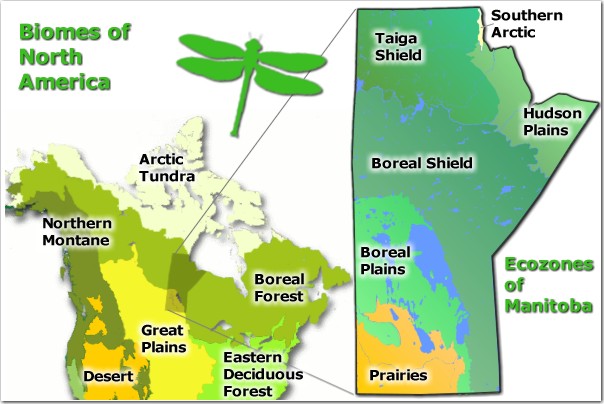
Each biome is divided into ecozones, areas
that share certain plant and animal communities, and have
similar climates. There are 6 ecozones in Manitoba. Importantly
for dragonflies, each has its own kinds of wetlands.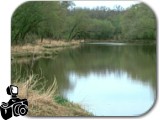
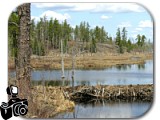 In
the Prairies ecozone, rivers and streams are slow moving,
usually with muddy bottoms. There are few lakes, but many
marshes and small shallow ponds. In some Boreal
ecozones (Taiga Shield and Boreal Shield), rivers and streams
are clear and swift running with rocky bottoms. There are
many large and small lakes and deep ponds. In
the Prairies ecozone, rivers and streams are slow moving,
usually with muddy bottoms. There are few lakes, but many
marshes and small shallow ponds. In some Boreal
ecozones (Taiga Shield and Boreal Shield), rivers and streams
are clear and swift running with rocky bottoms. There are
many large and small lakes and deep ponds.
|
| 
Habitat for dragonflies must include wetlands
with fresh water for nymphs, and uplands to provide food
and shelter for adults. Dragonflies choose their habitat
by sight. Most species look for a certain kind of wetland
(marsh, pond, stream or lake) in a specific upland setting
(deciduous forest, coniferous forest, grassland or meadow).
The habitat a species selects can determine
its range. For example, the Plains Clubtail (Gomphus externus)
breeds in slow-flowing muddy rivers. 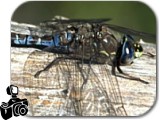
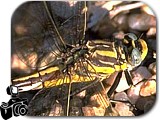 Its
North American range is limited to the Great Plains, where
you would expect to find such waterways. In Manitoba, it
is found in the Prairies ecozone. Another species, the Zigzag
Darner (Aeshna sitchensis), has a range that shows it has
a strong preference for northern coniferous forests. In
fact, its range even mirrors those of other animals that
inhabit the Boreal Forest and Northern Montane biomes.
In Manitoba the Zigzag Darner is found throughout the Boreal
ecozones. Its
North American range is limited to the Great Plains, where
you would expect to find such waterways. In Manitoba, it
is found in the Prairies ecozone. Another species, the Zigzag
Darner (Aeshna sitchensis), has a range that shows it has
a strong preference for northern coniferous forests. In
fact, its range even mirrors those of other animals that
inhabit the Boreal Forest and Northern Montane biomes.
In Manitoba the Zigzag Darner is found throughout the Boreal
ecozones.
 Not
all dragonflies have their ranges linked to a certain biome.
Some, like the Shadow Darner (Aeshna umbrosa) have a very
broad range. It breeds in a variety of wetlands and is found
in many different sorts of forested uplands. Not
all dragonflies have their ranges linked to a certain biome.
Some, like the Shadow Darner (Aeshna umbrosa) have a very
broad range. It breeds in a variety of wetlands and is found
in many different sorts of forested uplands.
|
| 
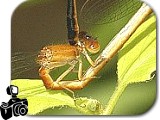 There
are dragonflies that breed in just about every kind of wetland
that occurs in Manitoba, from big lakes to small ponds,
from tiny creeks to large rivers, and from small springs
to large bogs. Some species breed in a number of types of
water bodies and are very common, like the Shadow Darner.
Others breed only in very specific wetlands and are only
found near these habitats. The Eastern Red Damsel (Amphiagrion
saucium) breeds only in slightly alkaline spring-fed ponds.
This habitat type is quite uncommon so this is a rare species
in Manitoba. There
are dragonflies that breed in just about every kind of wetland
that occurs in Manitoba, from big lakes to small ponds,
from tiny creeks to large rivers, and from small springs
to large bogs. Some species breed in a number of types of
water bodies and are very common, like the Shadow Darner.
Others breed only in very specific wetlands and are only
found near these habitats. The Eastern Red Damsel (Amphiagrion
saucium) breeds only in slightly alkaline spring-fed ponds.
This habitat type is quite uncommon so this is a rare species
in Manitoba.
|
|  There are dragonfly species in all
of our ecozones except the Southern Arctic. Worldwide,
the range of dragonfly species stops at about the
treeline. There are no truly "Arctic" dragonflies.
There are dragonfly species in all
of our ecozones except the Southern Arctic. Worldwide,
the range of dragonfly species stops at about the
treeline. There are no truly "Arctic" dragonflies.
|
|
|

Fly back to NatureNorth.com |
|
| |
|